Panoramic Photo Above:
Wrigley Field, Chicago

Baseball History Comes Alive Now Ranked As a Top Five Website by Feedspot Among All Baseball History Websites and Blogs!
(Check out Feedspot's list of the Top 35 Baseball History websites and blogs)
Guest Submissions from Our Readers Always Welcome! Click for details
Scroll Down to Read Today’s Essay
Subscribe to Baseball History Comes Alive for automatic updates. As a Free Bonus, you’ll get instant access to my Special Report: Gary’s Handy Dandy World Series Reference Guide!
1930s Baseball Photo Gallery
Click on any image below to see photos in full size and to start Photo Gallery:
Let’s Test Your Knowledge of 1930s Baseball!
It’s time to put your thinking caps on! Or, as I used to hear back in grade school: “OK class, close your desks and take out a piece of paper. We’re having a pop quiz!”
But don’t worry…you won’t be graded!
In the featured photo above, we see a neat pic of Babe Ruth as a Boston Brave grouped with a bunch of other players in Red Sox uniforms. It’s from the Boston Public Library Leslie Jones collection.
As I’ve mentioned a few times, about 12 years ago I was part of the SABR team that helped identify almost 3000 newly discovered photos from the Boston Public Library Leslie Jones collection. The unidentified photos, mostly from the 1930s and ’40s, were found in the basement of the library. Upon making the discovery, the proprietors of the library then asked SABR for help in identifying the players. I was recruited because my specialty is identifying individual players and small groups. So that became my main focus for the project.
One day this message appeared in my in-box, with the following words from project editor Author Mark Stang: “Hey Gary, see what you can do with this one…”
“Gee thanks, Mark! Do you think you could assign me anything harder??” After quite literally spending many hours in research for the photo, I finally came up with the complete IDs. It now happens to be one of my favorite photos from the entire collection.
Don’t feel bad if you can only identify one or two, or even none, of the players. As I said, I spent hours trying to come up with the names. And then, when I had finished, I wondered: Just why did photographer Leslie Jones put this group together? And then it hit me (read on…).
As many of you also know, I love challenging you guys with photo identification quizzes (see my currently running “Mystery Player World Series Tournament”). So we can have some fun with this one. Here’s your assignment, that is, if you choose to accept it! If you prefer, you can just go directly below to see the answers.
- Can you name any of the players? (OK…besides the Bambino!)
- What year was it? (That should be easy)
- Where was it taken?
- What’s the occasion for the game?
- Why was this group put together by photographer Leslie Jones?
I’ll give you a few minutes to think it all over before revealing the answers. Feel free to write any thoughts you might have about the photo in the comments section. But don’t worry. I promise…You won’t be graded!
Ready? OK, here we go:
- Player Identifications: L-R: Dusty Cooke, Doc Farrell, Dusty Rhodes, Babe Ruth, Hank Johnson, George Pipgras, Billy Werber.
- The year is 1935, the only year the Bambino was with the Braves.
- The game was played at Braves Field.
- It’s the annual City Series pre-season exhibition game between the Braves and the Red Sox.
- The other six players in the photo were all former Yankee teammates of the Babe who were now on the Red Sox.
The Reason Photographer Leslie Jones Put this Group Together
Leslie Jones was the long-time baseball photographer for the Boston Herald Traveler. He was known for odd groupings of ballplayers in his photos. Since I was the one tasked with identifying players from his unusual goupings, I became real familiar with his reasons for putting guys together. For instance, he loved groups of players who he thought looked alike (some of these are really funny!). He also liked to group together players with the same ethnicity, last name, players from the same hometown, and players who were former teammates. That’s what he did here, as I soon discovered.
These guys are all former teammates of the Babe, who, at the time the photo was taken, were all on the Red Sox.
Talk About Obscure!
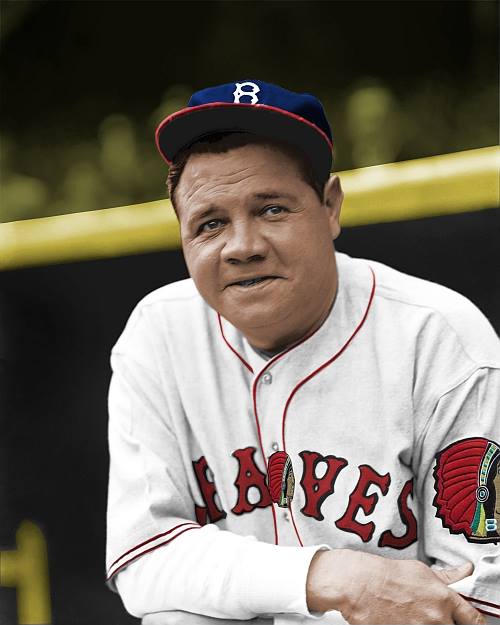
I also enjoy rescuing obscure ballplayers from the dustbin of history, so I hope you’ll take a minute or two to read a few words about each one of them before they totally disappear from us over the passage of time:
Dusty Cooke
Known for his defensive abilities, Cooke was a competent fourth outfielder able to handle all three outfield positions. In an eight-season career, he was a .280 hitter with 24 home runs, 229 RBI, 324 runs, and a .384 on-base percentage. (Yankee teammate of Ruth 1920-’32).
Doc Farrell:
In a nine-season career as a utility infielder, Farrell was a .260 hitter with ten home runs, 213 RBI, and 181 runs. As a fielder, he appeared in 376 games at shortstop, 118 at second base, 56 at third, and three at first. (Yankee teammate of Ruth 1930-‘31).
Gordon “Dusty” Rhodes:
In an eight-year pitching career, Rhodes posted a 43–74 record with 356 strikeouts and a 4.85 ERA. He was a competent hitter for a pitcher, posting a .194 batting average (69-for-356) with two home runs and 34 RBI. He’s often confused with another Dusty Rhodes who played for the Giants in the 1950s and was one of the stars of the 1954 Worlds Series. (Yankee teammate of Ruth 1929-’31).
Hank Johnson:
In a 12-season pitching career, Johnson posted a 63–56 record with 568 strikeouts and a 4.75 ERA. He divided his playing time as a starter, middle reliever, and occasional closer during a career hampered by illness. His most productive years came with the Yankees, winning 14 games in 1928 and 1930, and 13 in 1931. He developed chronic bursitis that eventually ended his career. (Yankee teammate of Ruth 1925-‘32).
George Pipgras:
In an eleven-season pitching career, Pipgras posted a 102–73 record with 714 strikeouts and a 4.09 ERA. Pipgras lead the American League in wins in 1928 with a 24–13, 3.38 ERA season for the 1928 World Champion Yankees. After ending his 11-year career, he became an American League umpire from 1938 to 1946. He was the umpire behind the plate in one of baseball’s most dramatic wins ever on September 30, 1945, at St. Louis’ Sportsman’s Park. In the ninth inning, Pipgras suggested to Greenberg that the game should be called on account of darkness. Greenberg convinced him that he could still see the ball, so the game proceeded. Greenberg hit the next pitch over the fence and the Tigers won the pennant and eventually the 1945 World Series. (Yankee teammate of Ruth 1923-‘24,1927-‘33).
Billy Werber:
In an 11-season career as a third baseman, Werber was a .271 hitter with 78 home runs and 539 RBI. One of the strongest and most aggressive base runners of the 1930s, he stole 215 bases. He led American League third basemen in putouts and assists once each and also led National League third basemen in assists, double plays, and fielding percentage once each. He led the American League in stolen bases three times and led the National League in runs once. Before his death in 2009 at age 100, Werber was the oldest living player, and was also the final surviving teammate of Babe Ruth. (Yankee teammate of Ruth 1930 and 1933).
Here’s hoping you enjoyed this little excursion through 1930s baseball. Check out the photo gallery for more!
Gary Livacari
Photo Credits: Featured photo from the Leslie Jones Boston Public Library collection. Ruth colorization was found on the Out Of The Park website by poster Krantzbucks. All others from Google search
Subscribe to our website, “Baseball History Comes Alive!” with over 1200 fully categorized baseball essays and photo galleries, now surpassing the 700K hits mark at 775K hits and over 600 subscribers: www.baseballhistorycomesalive.com
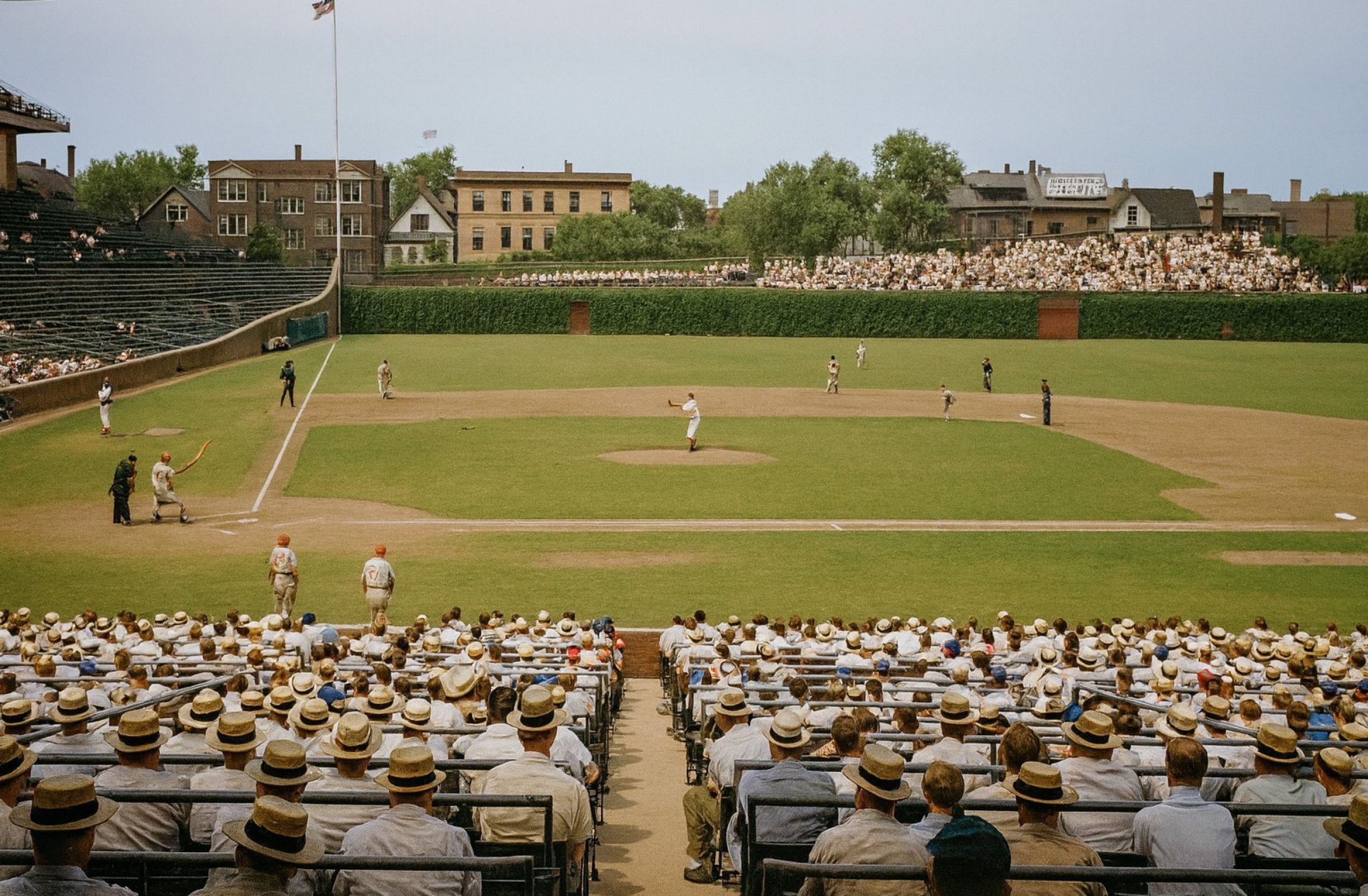
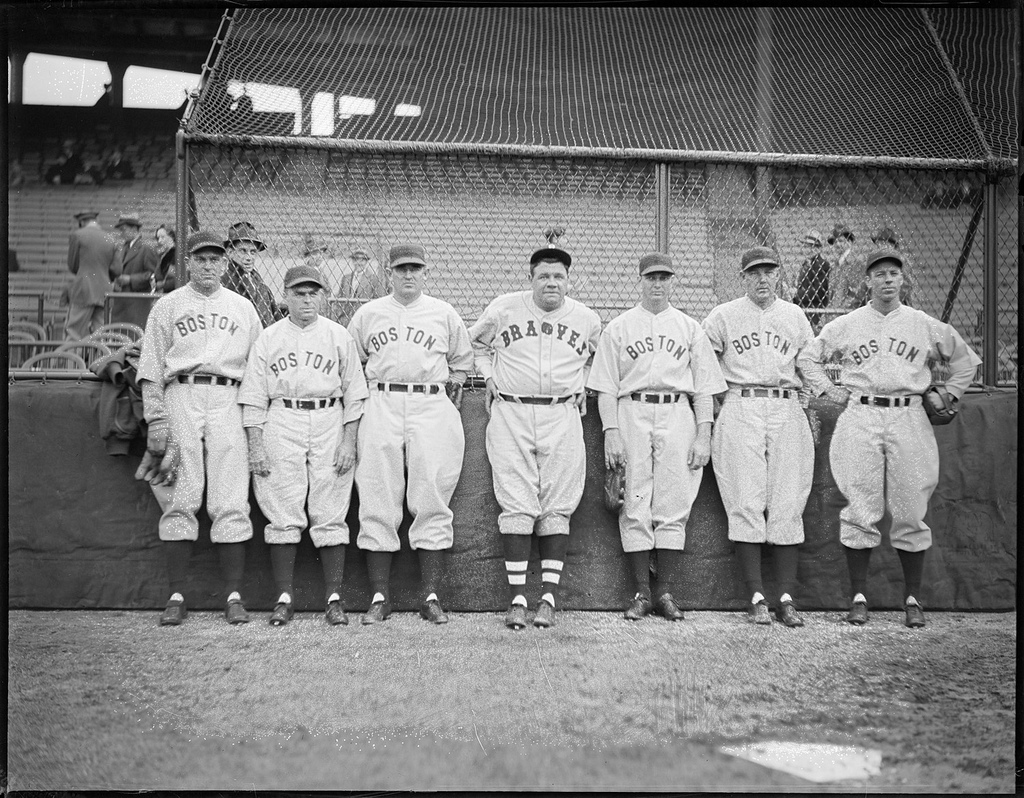
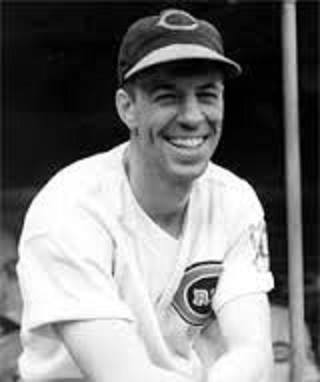
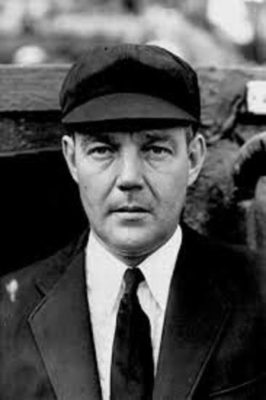
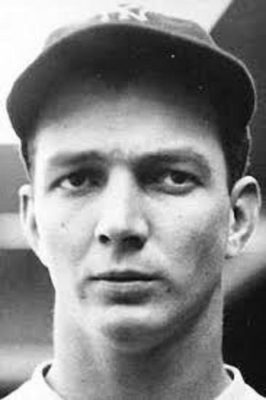
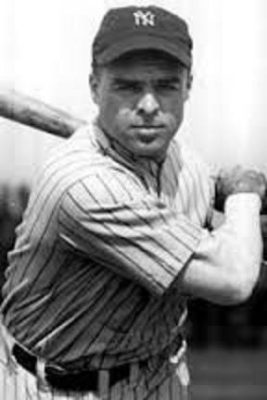
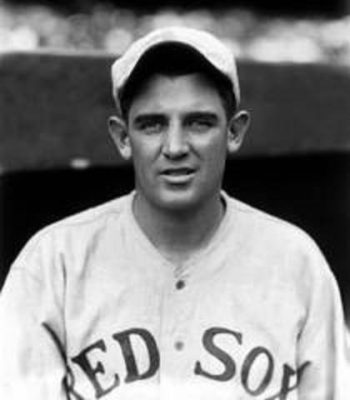
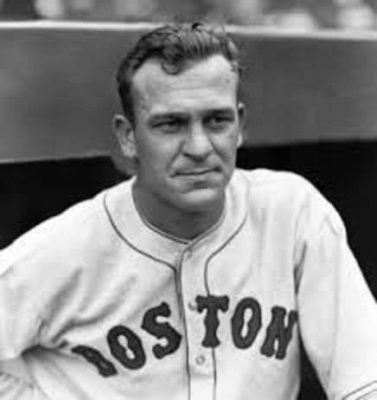
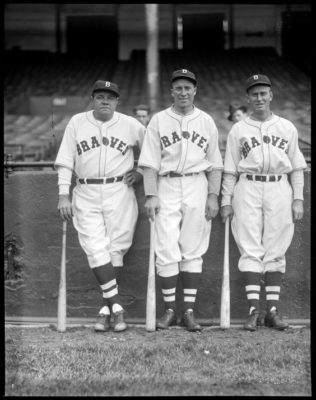
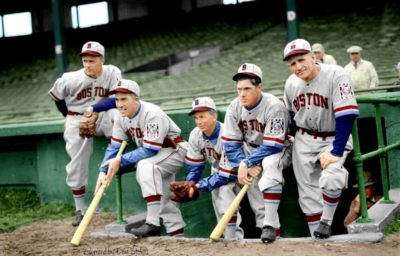
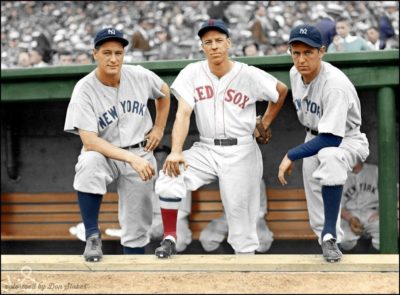
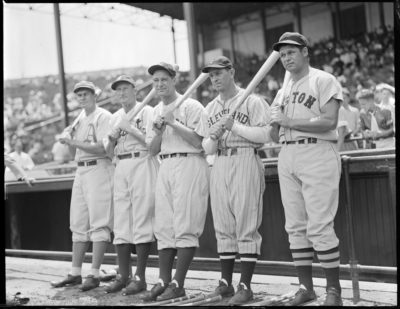
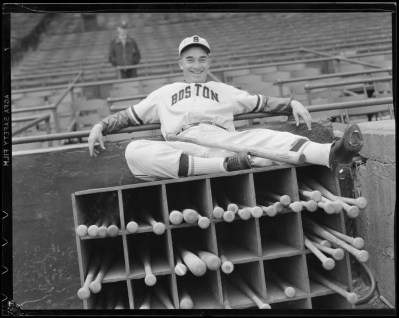
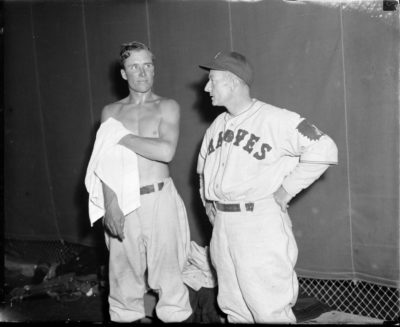
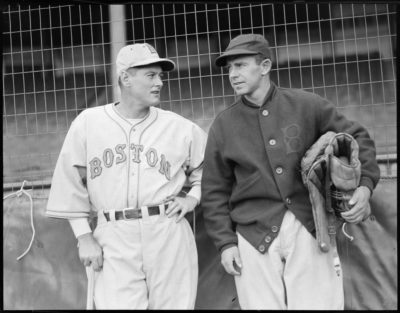
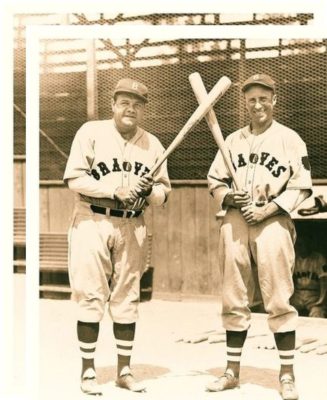
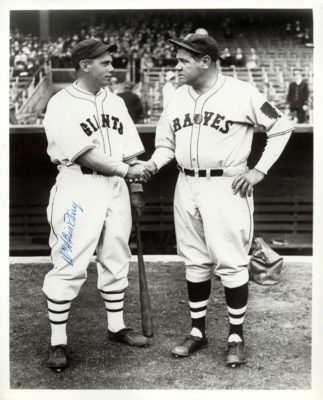
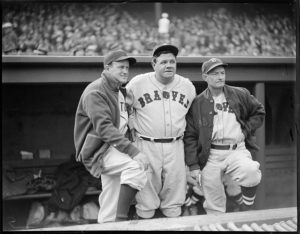
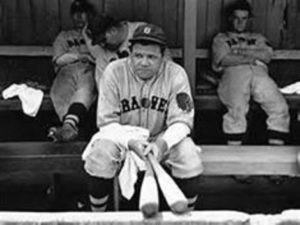
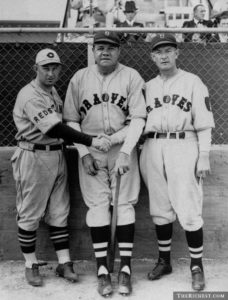
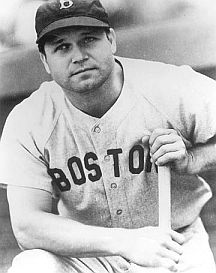
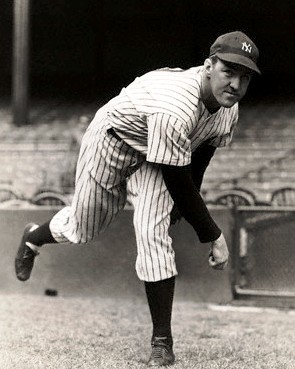
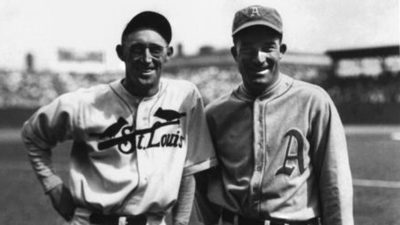
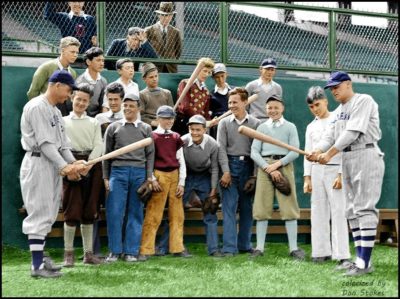
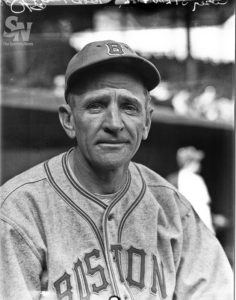

Ruth homered in that exhibition game against Sox.
Clip attached
https://www.mlb.com/redsox/video/ruth-homers-in-exhibition-game-c1224911283
Thanks, I remember that clip. I posted it a few years ago but I don’t off-hand remember where. I love watching the Bambino’s home run swing in the clip. You can see very clearly where his enormous power came from!
I got questions 2,3,4 with no problem. Totally whiffed on questions 1 and 5.
Haha! Would have thought you’d get George Pipgras and Billy Werber!
Hi, Gordon ” Dusty ” Rhodes is my Maternal Grandfather! Great to see his face here. I have done extensive research on him and hope to write a book about him and his time in Baseball. I have a good collection of Original Photos and memorabilia as well. Dusty was a phenom who pitched his way from West High in Salt Lake City through Hollywood in 1928 up to the Yankees in 1929. Sadly, he never achieved the prominence the great Bill Essick Yankees scout and others expected from the Handsome pitcher, and he spent 8 mediocre years in the Bigs. If anyone is interested I have some great photos and anecdotes from the life of Gordon Dusty Rhodes whom Babe Ruth once said ” Had the fastest curve in the Majors”
Thanks for checking in, Jeff…great info!